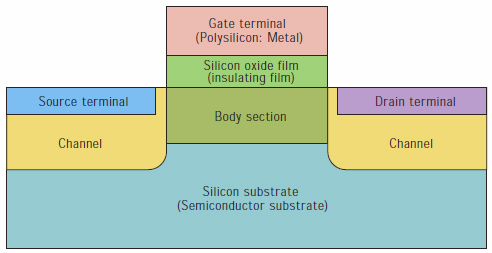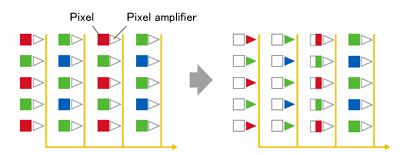Many people consider the quality and sensitivity of CCD image sensors to be superior to those of CMOS image sensors, and since both of these factors have a large impact on an image's expression, CCD image sensors are often used in professional-level equipment. CMOS image sensors, on the other hand, have the advantages of high-speed signal readout and low power consumption. Also, since CMOS image sensors and their peripheral circuits can be designed to fit onto a single chip, they are used primarily for small-sized, low-cost products, e.g., mobile phones and toy cameras. |






